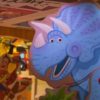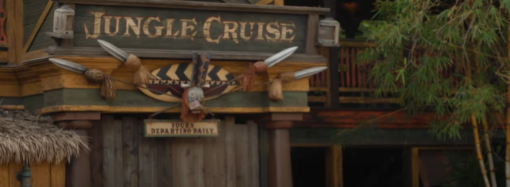Bob Chapek, CEO, The Walt Disney Company [NYSE:DIS], recently participated in a Morgan Stanley Technology, Media, and Telecommunications Conference. The interview, which was conducted by Morgan Stanley’s media analyst, Ben Swinburne, focused primarily on Disney’s direct-to-consumer (DTC) division and Disney Parks. Click here for the entire interview.
Starting with Disney+, Swinburne asked about the meteoric rise of the freshman streaming platform. He touched upon the fact the Disney increased their subscriber base by almost 300% over April 2019 and asked Chapek what is informing them that consumer interest in Disney+ is larger than they [Disney] thought.
Chapek said that they knew that their “total addressable market was 1.1 billion households” but they saw a much higher subscriber rate than anticipated. Disney analyzed where those numbers were coming from given the information they had on their market and their library and found that it came down to the “four quadrant appeal.” However, during this analysis, Disney learned that over 50% of their global marketplace subscribers do not have children. “That is the big difference,” said Chapek. “When fifty percent of the people in Disney+ don’t have kids you really have the opportunity now to think much more broadly about the nature of your content.”
What may be helping Disney capture a “no-kid audience” is the type of content – in particular original content – on the streaming service. They have seen huge successes with “The Mandalorian,” from the Star Wars franchise and “WandaVision” from the Marvel franchise.
Chapek also touched on, but did not go into great detail on two new upcoming Marvel offerings – “Falcon and the Winter Soldier,” which Chapek said is “an epic, almost cinematic type experience… it’s big and bold,” and the “equally creative and inventive” series “Loki.”
When asked about who he thought was going to win the streaming wars, Chapek said he did not think of it in terms of a war in “terms that there will be one winner.” He went on to say that he thinks there will be “multiple winners” and that Disney is “highly confident” they will be one of them. He continued, “If you look at our unparalleled brands, the franchises that make up those brands, the tremendous content creators leading each one of those segments … and then the content … and the … amount of content that is pouring out we think we’re tremendously positioned for the future for DTC services.”
When talking about how Disney (and presumably other movie studios) will handle future theatrical release post-COVID, Chapek said he’s “not sure there’s going back” to pre-pandemic theatrical windows.
Although in 2019, Disney had 11 films that earned at least $1 billion each, which “will continue to be a big deal,” Chapek said there was no denying that the COVID-19 pandemic is a very fluid and unpredictable situation. Considering most movie theaters have yet to reopen and – as of now – moviegoers’ unwillingness to go to a theatre, as well as other consumer behaviors are “more profound” to Chapek.
Disney will be studying these new consumer preferences and how they will shift in the longterm. As of now, gone are the days where audiences have to put up with others talking during a film, ringing cellphones, long previews, overpriced food, among other annoyances. Add to that the new (and sometimes controversial) realities from COVID (e.g. mask wearing) and worrying if someone takes their face covering off once the film starts. Is seeing a film on the big screen more than enough to make consumers return?
“I think the consumer is probably more impatient than they’ve ever been before,” said Chapek. “Particularly since now they’ve had the luxury of an entire year of getting titles at home pretty much when they want them. So I’m not sure there’s going back, but we certainly don’t want to do anything like cut the legs off a theatrical exhibition run.”
“I don’t think they’ll have much of a tolerance for a title, say, being out of theatrical for months, yet it hasn’t had a chance to actually be thrown into the marketplace in another distribution channel, just sort of sitting there getting dust,” he added.
“Raya and the Last Dragon,” will be Disney’s second film – after “Mulan” – to open in select theaters and on Disney+ on March 5 under their “premier access” category. The additional fee of $30 – also the same as “Mulan” – will also be in effect.
“It certainly makes a lot of sense right now, in a COVID world, to have an option,” he said. “Obviously, theaters aren’t going to be 100% back. But it’s nice to know that we’ve got the ability for people who do want to enjoy it in their home — because they don’t quite feel confident in going to a movie theater — that they’ve got that choice. What this looks like in the future? Well, we’re going to gain a lot of experience and a lot of data points.”
In regards to Disney Parks, Chapek said that first, Disney is thrilled how guests have responded to the precautionary measures they put into their parks. He said, “I think that speaks to brand confidence.” Some of those new measures are a park reservation system – which is expected to permanently remain in place, mandatory mask wearing, social distancing, enhanced cleaning procedures and others. Chapek believes as this moves forward it will help them increase capacity at those Disney Parks already open and help to reopen parks that remain closed.
On the subject of how the Disney Parks will recover, Chapek said that will depend on a number of variables: the speed of the COVID-19 vaccine and travel readiness from guests. Other factors that could also effect this is the number of COVID variants and how they are affected by the vaccine, the number of Americans who remain unemployed, and the percentage of the population who actually get the shot.
The pandemic has given Disney a unique opportunity to make some significant changes to the parks and how they operate that would not have otherwise been available or would have taken far longer to roll out.
One of the biggest examples of this is the elimination of the Disneyland annual pass. The company is currently working on a new system that would involve “new membership offerings.” As of yet, Disney has not announced what those offerings will include or when they will be available.
“In a non-COVID environment, it would have been a pretty tough [decision] to make, because they just keep renewing and renewing, but when you start lapping a year without anybody going for an annual pass program, that gives you the chance,” Chapek said. “We’re going to use that, though, in order to have an even better guest experience at Disneyland and manage the crowd so that no matter what day you go to Disneyland, you can have an extraordinary experience.”
Chapek said that technology has enabled them to tell an even more immersive story that otherwise would not be possible. The other area is how technology helps Disney is to simplify guest experiences such as contactless check-ins, keyless entry into guest rooms, and mobile ordering.







